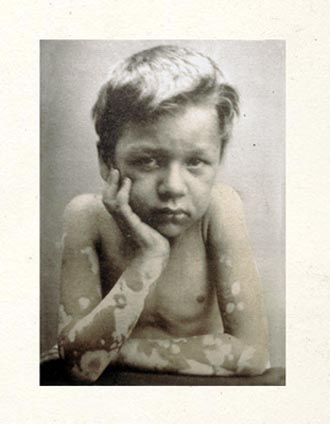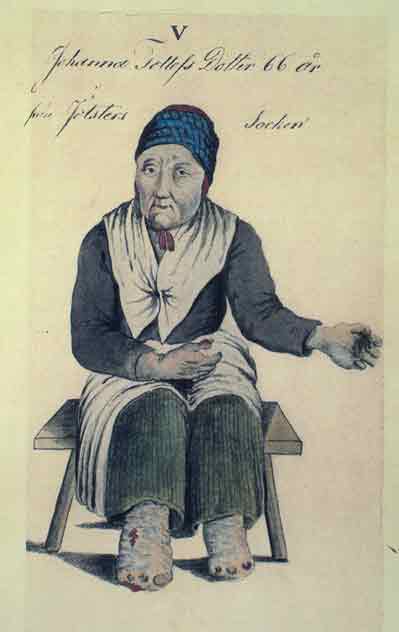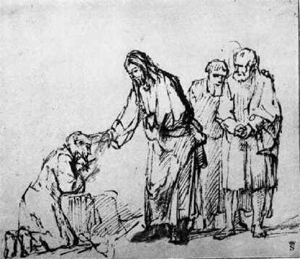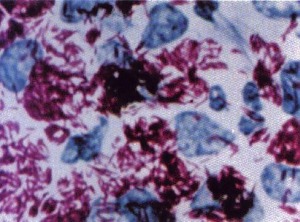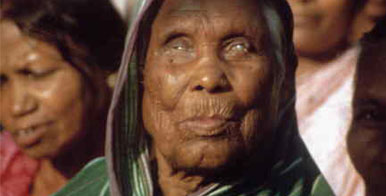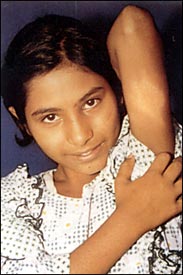  |
||||
|
|
LEPROSY, HANSEN'S DISEASE
Leprosy is caused by bacteria or germs called Mycobacterium leprae. It is an infection that affects the skin and the nerves of the hands and feet and can also cause problems in the eyes and nose.
A BRIEF HISTORY
Dr. Armauer Hansen of Norway was the first to see the leprosy germ under a microscope. This was 1873, and Hansen's discovery was revolutionary. The evidence was clear for all the world: leprosy is caused by a germ (Mycobacterium leprae). It was not hereditary, a curse, or from sin. Because of Dr. Hansen's work, leprosy is also called Hansen's Disease.
Gerhard Armauer
Hansen
Leprosy has tormented humans throughout recorded history. The earliest possible account of a disease that many scholars believe is leprosy appears in an Egyptian Papyrus document written around 1550 B.C. Around 600 B.C. Indian writings describe a disease that resembles leprosy. In Europe, leprosy first appeared in the records of ancient Greece after the army of Alexander the Great came back from India and then in Rome in 62 B.C. coinciding with the return of Pompeii's troops from Asia Minor.
Throughout its history, leprosy has been feared and misunderstood. For a long time leprosy was thought to be a hereditary disease, a curse, or a punishment from God. Before and even after the discovery of its biological cause, leprosy patients were stigmatized and shunned. For example, in Europe during the Middle Ages, leprosy sufferers had to wear special clothing, ring bells to warn others that they were close, and even walk on a particular side of the road, depending on the direction of the wind. Even in modern times, leprosy treatment has often occured in seperate hospitals and live-in colonies called leprosariums because of the stigma of the disease. Leprosy has been so prevalent in various areas as certain times throughout history that is has inspired art work and influenced other cultural practices.
TRANSMISSION of LEPROSY
Leprosy is a chronic disease caused by a bacillus, Mycobacterium leprae, M. leprae multiplies very slowly and the incubation period of the disease is about five years. Symptoms can take as long as 20 years to appear. Leprosy is not highly infectious. It is transmitted via droplets, from the nose and mouth, during close and frequent contacts with untreated cases.
At least until recently, the most widely held beliefs was that the disease was transmitted by contact between cases of leprosy and healthy persons. More recently the possibility of transmission by the respiratory route is gainning ground.
SYMPTOMS Leprosy mainly affects the skin and nerves. If untreated, there can be progressive and permanent damage to the skin, nerves, limbs and eyes.
DIAGNOSIS AND TREATMENT
Leprosy is a curable disease and treatment provided in the early stage averts disability. Diagnosis of leprosy is most commonly based on the clinical signs and symptoms.
The skin lesion can be single or multiple, usually less pigmented than the surrounding normal skin. Sometimes the lesion is reddish or copper-coloured. Sensory loss is a typical feature of leprosy.
A physician diagnoses leprosy through a skin biopsy. In this test, a small piece of skin is taken from a skin spot and sent to laboratory, where it is examined for the bacteria. Skin smears are another test that can be used to make the diagnosis. This is done by making a small incision into the skin. A small amount of tissue fluid is obtained and examined in the laboratory for the bacteria. There are no blood tests for leprosy.
WHO provides free Multi Drug Treatment=MDT for all patients in the world, Who recommended Multi drug therapy (dapsone, rifampicin and clofazimine) this drug combination kills the pathogen and cures the patient; is safe and effective.
In our country centers for Leprosy researches; § İstanbul Tıp Fak. Lepra Araş.Uyg.Merkezi Çapa 0212-525 58 56 § İstanbul Lepra Hastanesi Bakırköy 0212-572 61 22-570 10 26 § Ankara Lepra Eğitim ve Araştırma Merkezi Dikimevi 0312-319 22 79 § Elazığ Lepra Hastanesi Elazığ 0424-212 46 16-212 16 54 § Cüzamla Savaş Derneği İstanbul 0212-572 71 89 § Cüzamla Savaş Vakfı İstanbul 0212-572 71 89 § Ankara Cüzam Savaş ve Araştırma Derneği Dikimevi 0212-319 22 79 References
|
|
||
|
|
||||
